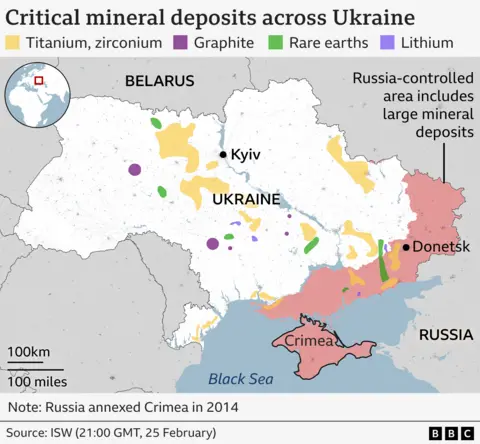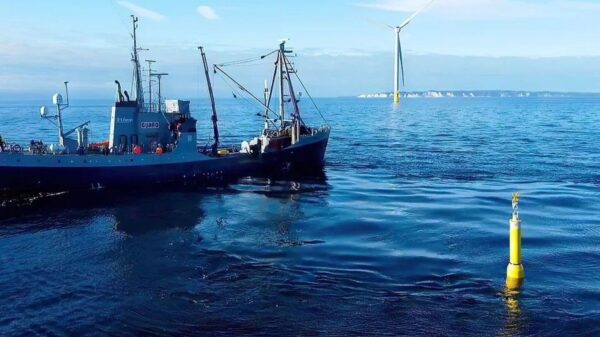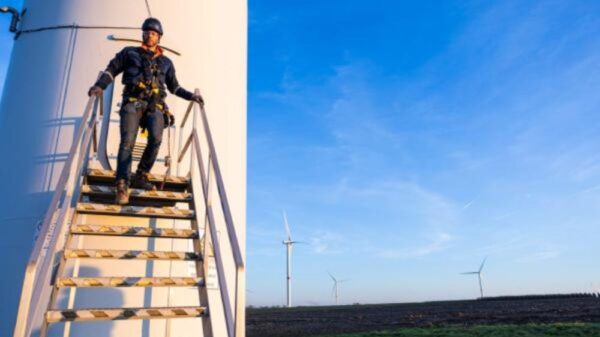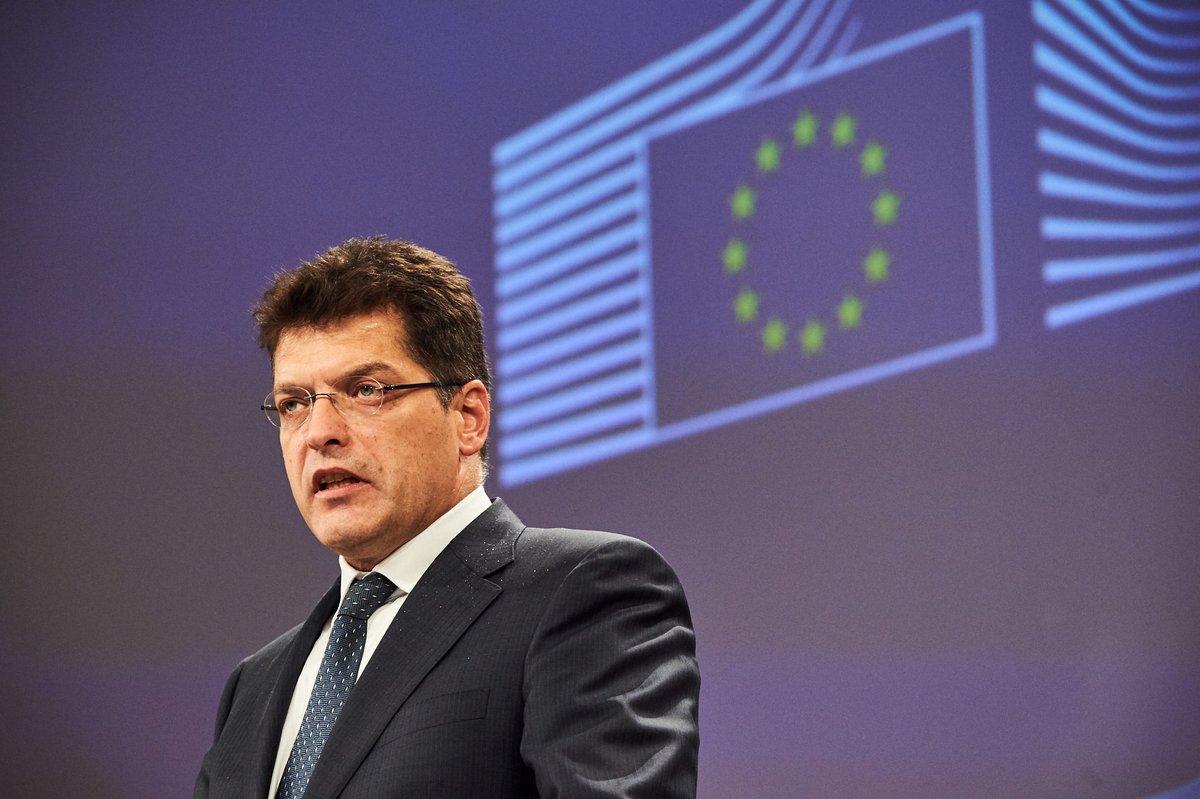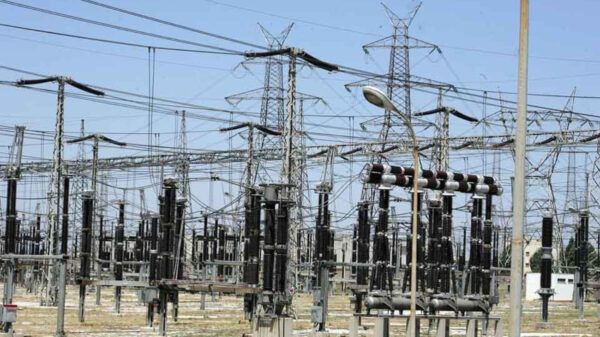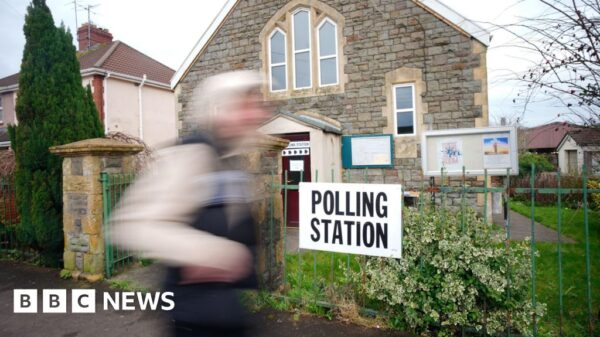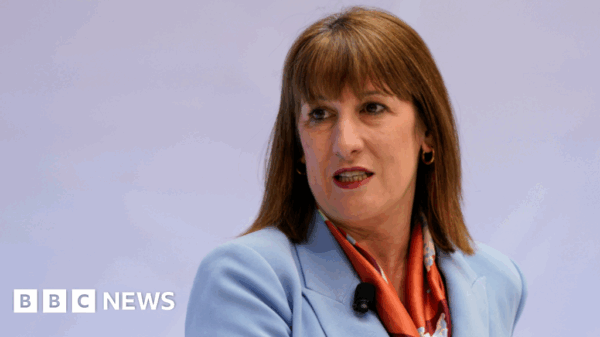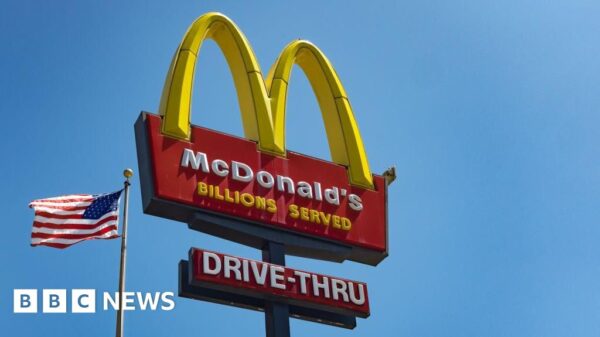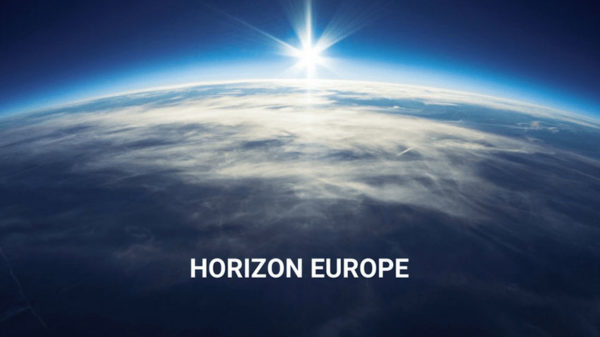BBC News
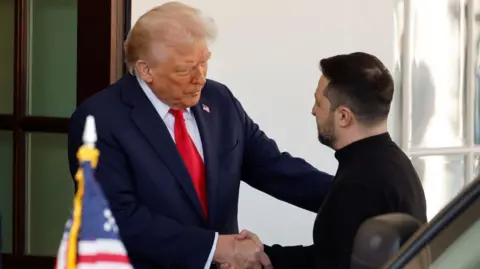 Getty Images
Getty ImagesThe US and Ukraine have signed a deal that will give Washington access to some of the war-torn country’s natural resources.
Months in the making, it sets up an investment fund that Ukraine hopes will cement US assistance as the country struggles to repel Russia three years after the invasion.
The BBC has seen a draft of the deal but not the final text. Based on that and the public statements from both sides, here are seven key takeaways.
No Ukrainian payback to US
Trump has previously demanded that Ukraine pay back the $350bn (£264bn) of aid that he claims has been provided by the US during the war – a condition that Zelensky rejected.
But Washington appears to have made a concession. Ukrainian Prime Minister Denys Shmyhal said the agreement did not dictate that his country pay back any supposed “debt”.
Trump has styled the agreement as a win for his side as well, saying his country will get back “much more in theory” than the billions that were provided to Ukraine by his predecessor Joe Biden.
Tougher tone from US towards Putin
The language used by the US in announcing the deal is notably harsher towards Russia than is usually the case from the Trump administration.
A statement by the US Treasury Department refers to “Russia’s full scale invasion” and adds that “no state or person who financed or supplied the Russian war machine will be allowed to benefit from the reconstruction of Ukraine”.
This will hearten Kyiv, which has demanded more pressure be placed on Russia in talks between Moscow and Washington discussing a possible ceasefire.
Oil and gas included alongside minerals
Despite the fact that much of the talk around the deal relates to Ukraine’s mineral wealth, the agreement also includes provisions for new oil and gas projects, and related infrastructure.
In all cases, the resources stay in Ukrainian ownership, even though the US will get joint access.
This has been seen as a softening of the Ukrainian position, since it was not in earlier drafts of the deal.
No hindrance to Kyiv’s EU ambitions
Ukraine has long aspired to join the European Union and accession talks formally began last June.
There were some concerns in Kyiv that the resources deal could hinder Ukraine’s ability to join the EU, if it gave preferential treatment to US investors, as Kyiv and Brussels already have a strategic partnership on raw materials.
But the deal’s text says that the US acknowledges Ukraine’s intention to join the EU and the need for this agreement not to conflict with that.
It also says that if Ukraine needs to revisit the terms of the deal because of “additional obligations” as part of joining the EU, then the US agrees to negotiate in good faith.
Additionally, Kyiv says the US will support additional transfers of investment and technology in Ukraine, including from the EU and elsewhere.
Profits to be reinvested in Ukraine for 10 years
Another intriguing element of the deal is that, for the first decade of the reconstruction investment fund, profits will be “fully reinvested in Ukraine’s economy”.
This is potentially significant if there is no financial benefit for the US for 10 years. Ukraine says it expects that any money that comes into the fund will go towards rebuilding the country and new projects.
After that initial period, profits may be distributed between the partners. US Treasury Secretary Scott Bessent told Fox News that the deal was a signal to the American people that “we have a chance to participate, get some of the funding and the weapons, compensation for those and be partners with the success of the Ukraine people”.
A US military commitment back on table…
The US has framed the deal as an essential one to sign if Ukraine is to continue to receive its military assistance.
Ukrainian First Deputy Prime Minister Yulia Svyrydenko – who flew to Washington DC to sign the deal – said it envisaged the US contributing new assistance in the future, such as air defence systems.
This, too, would mark a change in strategy for Trump – who has sought to wind down military support for Ukraine since returning to the White House.
One outstanding question is what the accord will ultimately mean for the state of the war. The Kremlin has not yet responded to the agreement.
…but US can still walk away any time
It appears there are no concrete security guarantees from the US, which is something Ukraine and Europe have long been pushing the White House to provide.
Trump has long been reluctant to give the same military commitment that Biden had given.
Instead, his interest in staying the course with US support for Ukraine is more implicit, due to the economic commitments set out in this deal.
That means there would still be a fragility about the commitment of Ukraine’s most important ally.

